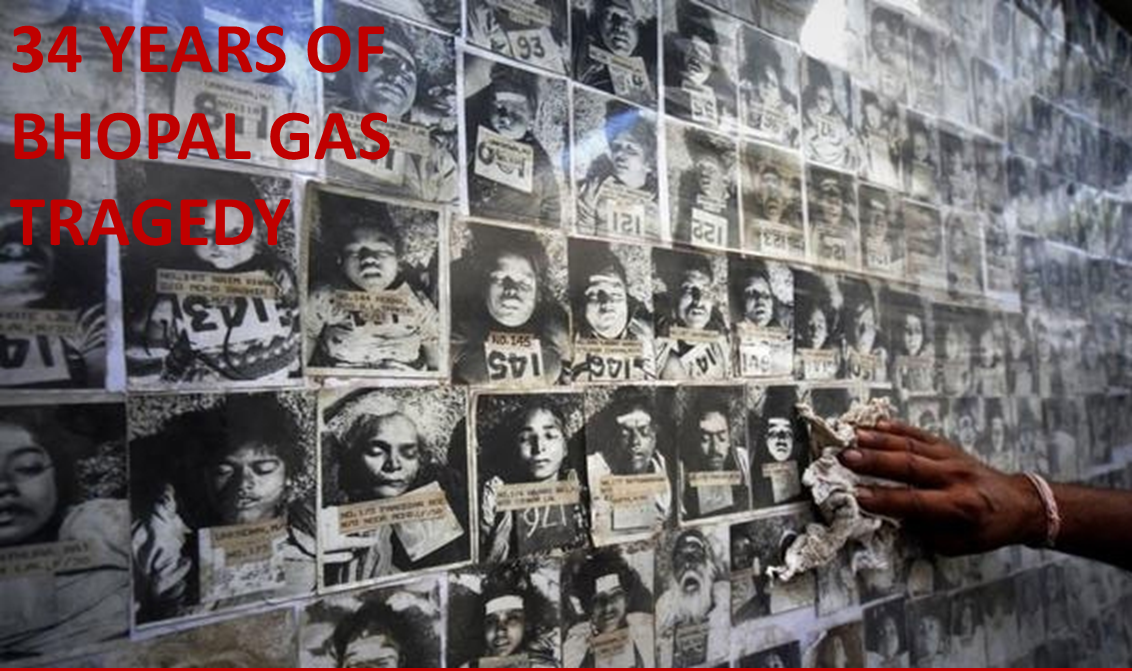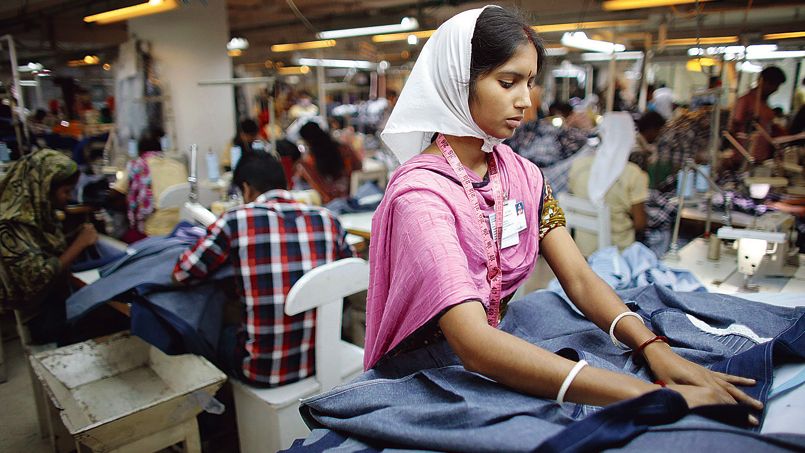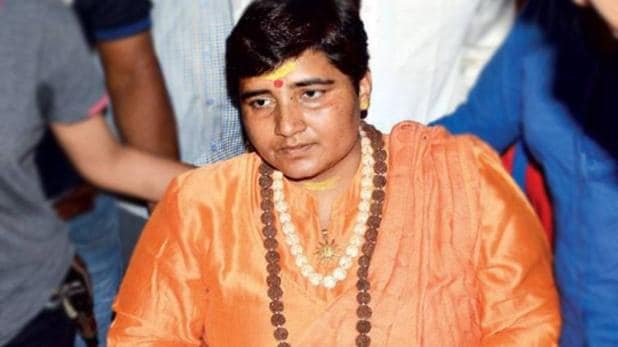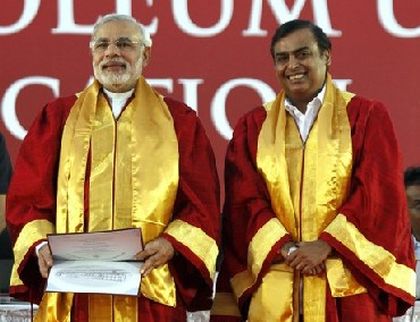UNFORGETTABLE BHOPAL GAS TRAGEDY
The tragic and unforgettable Bhopal gas tragedy was a gas leak incident at the Union Carbide India pesticide plant in Bhopal, Madhya Pradesh that is considered as the worst industrial disasters in recent times.
Mohammad Zafar is working in the field of science education in district Uttarkashi of Uttarakhand.
 Photo: AP
Photo: AP
[dropcap]W[/dropcap]hen I was in school, I read about Bhopal Gas tragedy in environment related chapters. That time I just knew that a deadly accident had occurred in Bhopal on 2nd and 3rd December 1984. Then at the time of graduation I read the translation of a marvelous book by Dominique Lapierre and Javier Moro, called “Five past midnight in Bhopal” and in Hindi it was “Bhopal: barah baj ke panch minute”. I finished the book in a flow and it increased my hunger to know more. Also, it has changed my perspective of looking at that tragedy as just an accident which I read in my textbooks. Of course it’s not new that school textbooks don’t give us many angles to explore but merely give us facts and information.
So, the next book I read on this issue was Suroopa Mukherjee’s beautifully and simply written “Bhopal Gas tragedy: a book for young people”. And this was like a movie which tells things scene by scene. These books inspired me to explore more and some years back I explored lots of material from the net, books (especially Suroopa Mukherjee’s) and made a play highlighting all angles of that issue along with some insights for learning from that incident suggested by good friends and faculties. Unfortunately despite trying two or three times that play didn’t happen. A friend of mine said already there is a great play on the incident, written by Rahul Varma and converted theatrically by Habib Tanveer in Hindi, called “Zehreeli Hawa”. So the idea of my play went aside but I got a new book called Zehreeli Hawa.
This topic “Bhopal gas tragedy” didn’t go from my mind and in Political economy elective too, I took this as my task and wrote a paper on it. Then again it gave some new references and findings such as Moti Singh’s book “Bhopal Gas Trasdi ka sach” on administrative efforts on Bhopal gas tragedy aftermaths, Anees Chishti’s “Dateline Bhopal”, Journalist Betwa Sharma’s insightful articles from EPW and other sources. Arvind Rajagopal’s article (Rajagopal, 1987) suggesting inside stories of incident and how it was more a human made incident than an accident. Then website “Bhopal.net” is the best option where I got many articles and videos on a same platform. In continuation to this, I once visited compound of Union Carbide India Limited Plant and clicked pictures. Also thought to meet Satinath Sarangi, who still leads the movement for justice with people, but meeting never came to existence. Hope one day I will meet him once.

So, this exploration gave me many angles to think on this. First how ignorance and negligence can become a deadly disaster, some profit makers’ carelessness can become a havoc for future too, some leaders’ ideas of development and growth can go with lives of thousands and lakhs and finally how our greed and insensitiveness can create a danger for humankind.
And the world saw this on 3rd December 1984 when a factory which was previously looked and presented by ministers and leaders as a role model of development, a chemical which was shown and produced as a panacea to save crops, became a deadly weapon for millions who had no single option than dying or suffering whole life. The intermediate product of insecticide Sevin or carbaryl was Methyl Iso Cyanate or MIC which was stored in liquid form in tanks much more than limitations.
Different theories suggest that mishandling and carelessness to store it in a proper way became a cause when water got mixed with deadly liquid MIC and gas released after reaction. Though some throw all burdens on a worker responsible for it, some still try to explore other angles but one thing was true that there was no proper way of controlling a situation like that. All saving equipment and techniques were failed that time, Vent gas scrubber, Flair tower, etc. all were not in working situation. The only thing that worked was the siren of factory which perhaps also took some time. And poors got a deadly fog that day when air was mixed with MIC. Some died immediately, some ran with their burning eyes, chocking throats and at night people just ran, just ran and even some ran towards factory too.

It was written in most of the books I mentioned that police, administration and all came to existence after 1 a.m there was no response from factories’ authorities. Just whole night people ran towards the one hope known as Hamidiya hospital but as Suroopa, Anees Chishti and all have written that Hamidiya Hospital staff was not able to manage such huge number of patients with a case non familiar to them. That time there was no one who knew a proper treatment of patients suffering from MIC poisoning. There was no proper training of doctors to deal with MIC. Some tried wet towels and some tried common methods to treat patients.
The nearest slum area near Union Carbide India Limited Plant was the hub of worst affected people who are still fighting.
At the end government shared data on the incident which says some 8000 people suffered from MIC poisoning, then it became 25000 to 30,000 but nobody knows what actual number was. May be more than lakhs who died and suffered directly or indirectly. Many new born babies then suffered from it, many got problems in their old age because of contamination and many like Sunil died with their sufferings. Sunil had made a group Children against Union Carbide to fight for justice.
The nearest slum area near Union Carbide India Limited Plant was the hub of worst affected people who are still fighting. Betwa Sharma’s article reveals that still many water sources are contaminated there and ground water is not good for proper use (Sharma, 2006). Waste product of that factory is still there and nobody knows what soil has faced after that. The compound of Union Carbide plant looks as a haunting ground but children play cricket in outer sides of that ground. Suffering people demand of compensations, protest against Dow chemicals on various platforms, and some years back, also to arrest Warren Anderson, the main accused who died naturally.
Two years back I was in a book launch ceremony organized by Eklavya organization at Bhopal of a book called “Mai dhundh raha hun” on Hiroshima Nagasaki atomic bomb blasts. There was a brief sharing of a girl from a sufferer’s family and she shared her experiences and how they still struggle for justice and when they went to meet previous PM, he didn’t give time to meet them. So, whoever is in government, it doesn’t matter. All leaders have too much time for business holders but not for farmers, sufferers of governments’ own faults.
Prologue
Union Carbide India Limited was a branch of Union Carbide Corporation which comes under Dow Chemicals, now. This was came to India in 60s as manufacturer of pesticides to save crop and money and leaders also looked it as a livelihood generation source. The pesticide Carbaryl was known as brand “Sevin” which was deadly for pests but not for Humans and environment (perhaps for short duration) and these features made it a good product for an economy struggling to increase crop production. The first dangerous fault that state did was, that the plant was not far from the city but it was adjacent to a populated region. The then governments and leaders were also showing it as a symbol of their progressive works and developmental idea (which is still dominated in our leaders’ thoughts that such factories are symbols of development). Even Rajagopal’s article shows that MP textbooks also showed this factory as a tourist spot (Rajagopal, 1987).
Internal investigations also found that it was a typical example of multinational, corporate and political connections. Many leaders’ relatives were working in the factory on good posts, its guest house was used by political leaders and bureaucrats as a recreation spot. Perhaps these would have been reasons that factory administration left all rules and regulation which they followed in other countries. Suroopa Mukherjee tells in her book that there was another method of producing carbaryl which Bayer chemicals had used in other places. (Mukherjee, 2005). But, the UCIL was running behind cost reduction and they used the cheap method of producing Carbaryl in which Methyl Iso Cyanate was a mediatory product, Plant’s storage capacity of that deadly chemical was much more than allowed one, all safety measures were in nonfunctioning conditions and administration didn’t learn from previous accidents of Phosgene. During 80s plant has become more and more careless towards safety issues. So, in 84, cost of that carelessness of government, plant officials and administrators was paid by poor public. Though Anderson face charge of culpable homicide but there are also stories about his fleeing from country and that too sounds political. I feel that only Anderson was not culprit, Indian business partners, officials, government ministers were all more or less responsible for that deadly night.
A warning for future
Recently, I heard news about some industrial accidents, deaths of some workers some plants and some other minor cases which come in news but we ignore as normal accidents. But Bhopal gives us an unfortunate learning that carelessness and greed of some people costs on whole humanity. The people who died because of UCIL Plant, its officials, warren Anderson, etc are not here to tell us their stories, people who are suffering are still fighting for justice and what we can do is that we can be only empathetic to them.
Even what Mukherjee’s book tells that Multinational Company Dow chemicals which bought UCC in 2001, tried to make a distance from liabilities of UCC and its officials denied it as their responsibilities. So, what we can do for ourselves is that at least we think and talk about these issues, we prepare our students and young generation as sensitive citizens for environment, for humanity and not mere power seeker politicians, greedy business holders.
What we can do is, to raise concerns about owners of factories, industries who are not in proper regulation, who bargain with environment or human safety for their profit, that we think and critique about policies and ideas of governments when they just look factories and industrial plants as only panacea of development. Now, its 34 years of Bhopal and lets come together with a promise that we should work together by our own ways and we won’t let it happen again.






